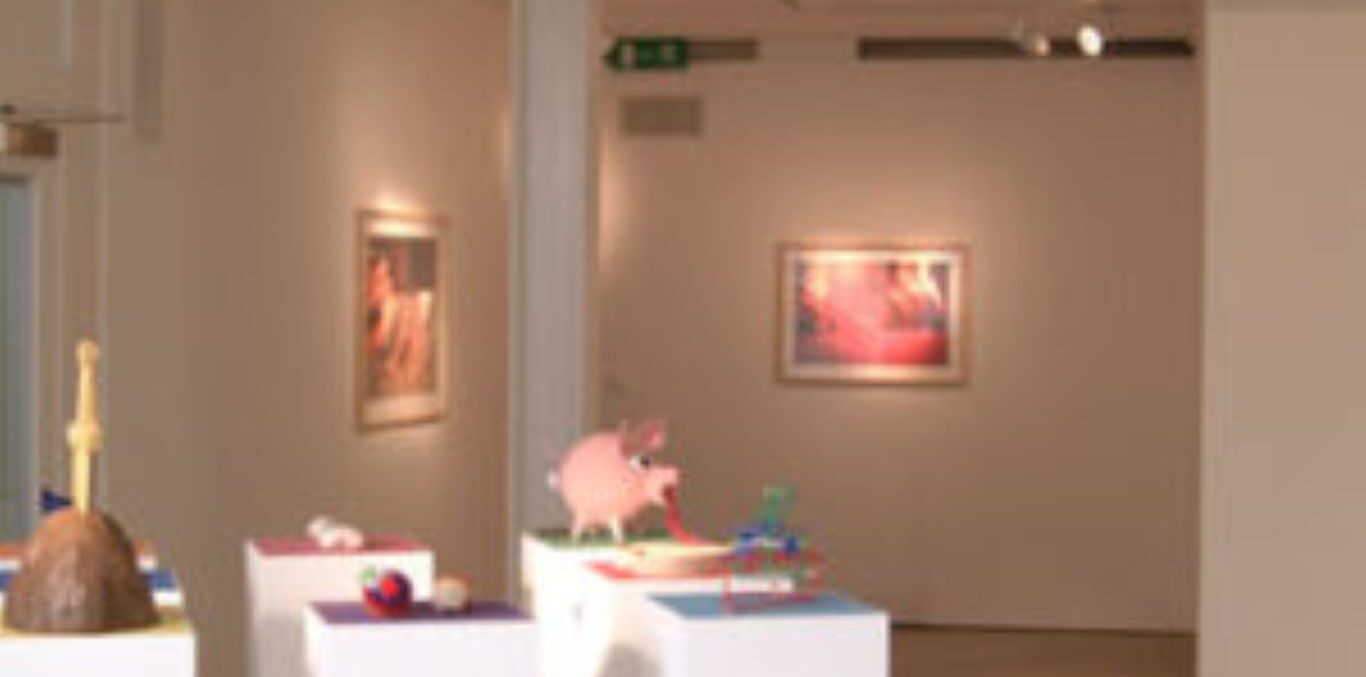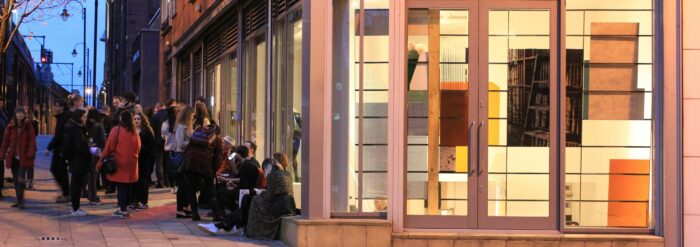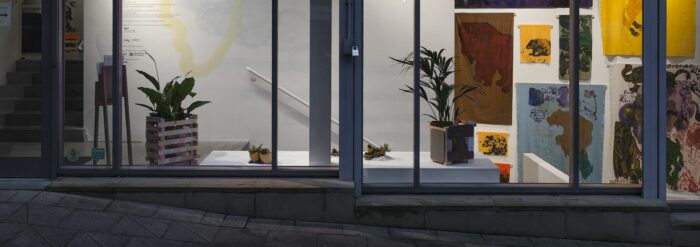
‘Games People Play’
Exhibition
‘Games People Play’
06 July 2002 - 25 August 2002
Rupert Clamp dreams of escape. Using the cracks in the building as a starting point, his drawn map installations leads us to new worlds, that until now have been hidden beneath the order of the gallery.
Social interaction is addressed as Marion Coutts alters the shape of a table-tennis table into that of a park. With the surface including all of the parks layout, the work references the urban planning of leisure, whilst reminding us of youth-club culture.
Fittings Multimedia Arts present a mixed media installation that explores the world of polevaulting from the viewpoint of two artists, one disabled and one not. We explore how the body’s flesh is being combined with technology, and where it will lead us.
Through sculptures and interventions Leo Fitzmaurice turns cigarette packets into sports shirts, door signs into questions and chairs inside-out. The artist manipulates his surroundings to challenge established perceptions of the everyday.
Dalton Fox produces obsessively accurate scale line drawings of board games and sporting stadia. The work gives as much information as an architectural plan would, but leaves no game to be played.
With contrasting text and imagery Lubaina Himid depicts psychological spaces within her paintings. Using recollections of journeys to find solace in families and friendship, Himid’s storytelling asks us to consider our past as well as our present.
Rules and obsession form the basis of the work of Abigail Hunt. Using texts which form the rules of games she meticulously cuts up and rearranges them. These visually beautiful, but ultimately useless work addresses irrational and unnecessary actions, questioning the restrictions we impose on our lives.
Jo Lansley and Helen Bendon explore notions of the real and unreal through their collaborative work. We are asked to consider the relationship of the artists as they dance together in a slowed down video. There images are set in domestic scenes, but on closer inspection are things quite what they seem?
Paul Scott produces ceramics that investigate associated accidents and incidents surrounding the industrial landscape. Mimicking the style of Italian Blue plates, where one expects to see fantasy worlds or homely scenes, he introduces images of contemporary landscapes those featuring most noticably nuclear power stations.
Aidan Shingler documents his experience of schizophrenia. Using a wide range of materials, Shingler presents representations of games which illustrate aspects of his personal experiences to help us consider how we perceive reality.
Charting his contact with a psychologist, Paul Stone brings us the results of his own personality profiling tests, presented as 16 cross-stitch samplers showing the positive and negative character attributes assigned to him. Questioning the importance of personal and professional opinions he also has the handwriting of his teachers and friends profiled by graphology.

